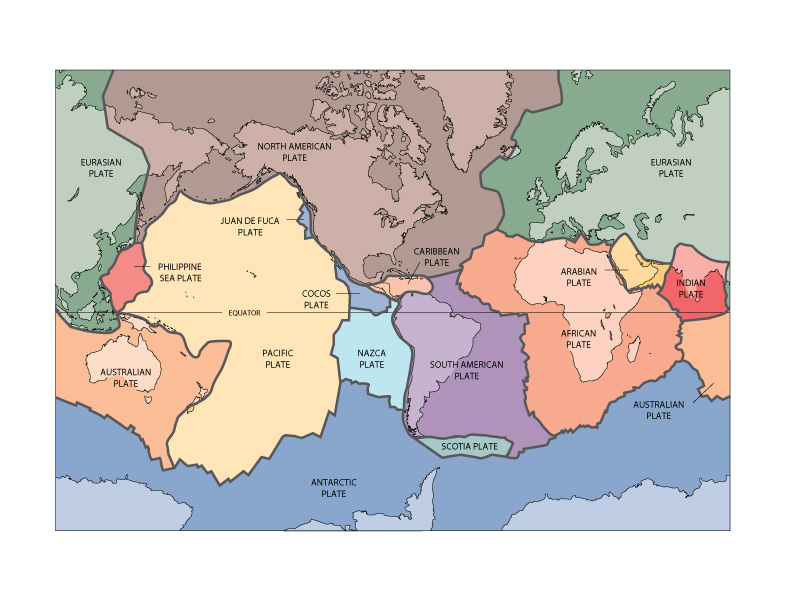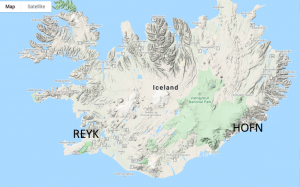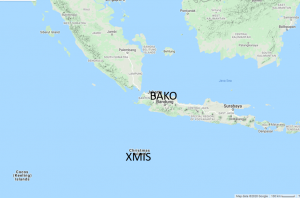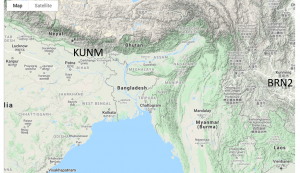25 What Type of Plate Boundary?
Elizabeth Johnson
Learning Objectives
Students will be able to:
- Identify the type of plate boundary from a map and GPS plate motion vectors.
Tools
- Plate Boundary Map:

2. NASA list of GPS station data with interactive map: https://sideshow.jpl.nasa.gov/post/series.html
3. UNAVCO Plate Boundary Viewer: https://www.unavco.org/software/visualization/GPS-Velocity-Viewer/GPS-Velocity-Viewer.html
- The default is plate motion relative to the North American plate: GNSS Data Source N America NAM14 UNAVCO.
- To change to a world reference frame like the time series data at the NASA site, go to: World IGS08/NNR, GEM GSRM. Then click “Draw Map” to update it.
- Remember: you can view plate boundaries on this map. See previous page.
- You can change the reference plate to make it easier to see relative motion. For example, it might help to view Indonesia relative to the Australian plate.
Examples
Example 1: Iceland
Find stations HOFN and REYK on the maps.

Question 18: Look at the data for station HOFN and station REYK in Iceland. What type of plate boundary is this?
- Convergent
- Divergent
- Transform
Example 2: Indonesia
Find stations XMIS and BAKO on the maps.

Question 19: Look at the data for station XMIS and station BAKO in the Christmas Islands and Indonesia. What type of plate boundary is this?
- Convergent
- Divergent
- Transform
Example 3:
Find stations KUNM in China and BRN2 in Nepal on the maps. Please note there is much more data on the UNAVCO site than on the NASA site for this example.

Question 20. Look at the data for KUNM in Nepal and BRN2 in China. Also look at the plate boundary and additional data from the UNAVCO site. What type of plate boundary is this?
- Convergent
- Divergent
- Transform

